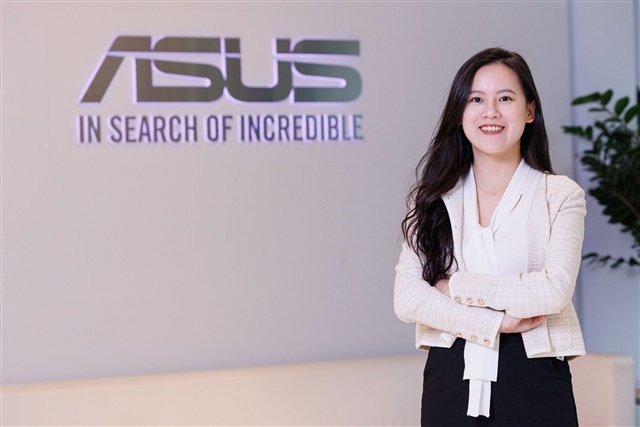The semiconductor sector demands stringent security and cybersecurity standards; any lapse may compromise brand reputation and operational integrity. Conventional surveillance still encounters challenges, such as the inability to analyze extensive camera footage in real time, reliance on manual risk inspections, and the tendency for most incidents to be investigated retrospectively, despite the establishment of stringent management systems.
From passive monitoring to proactive protection
ASUS IoT's AISEHS intelligent image-detection platform employs AI technology to convert image data into actionable insights, assisting prominent Taiwanese semiconductor manufacturers in transitioning from passive security management to proactive prevention, thereby initiating a new era of intelligent security in the manufacturing sector.
Delfina Shih, Product Manager of ASUS AI Solution Business Unit, stated that semiconductor facility safety management is primarily passive, with current operations dependent on post-event verification procedures. The widespread deployment of CCTV cameras at every site usually impedes the attainment of comprehensive and real-time surveillance, resulting in human fatigue-related errors. The absence of data-driven management tools makes it impossible for employees to undertake trend analysis or optimize SOPs.
Secure, compliant, and seamlessly integrated
The AISEHS platform adheres to the rigorous standards and operating requirements of the semiconductor sector. AISEHS employs a multi-tiered access control system to ensure that each department can access only relevant data, hence preventing interdepartmental information breaches. Deployment architecture includes pure cloud, hybrid cloud, and pure on-premises to fulfill the security compliance requirements of various companies. Furthermore, automated deployment procedures and quick model iteration approaches ensure that system updates do not disrupt on-site operations. The platform simplifies integration with existing client's video-management system (VMS), incident management, and internal communication systems This significantly improves management efficiency by enabling the detection, reporting, and resolution of security issues within a unified environment.
AI-driven detection and instant response
The AISEHS platform provides critical detection capabilities, such as the identification of personal protective equipment (PPE), which speeds up the assessment of an employee's proper use of safety equipment. Virtual fencing detection effectively prevents unauthorized entry into risky areas, whereas hazardous behavior detection monitors high-risk operations, such as maintenance or climbing, and automatically checks compliance with safety procedures. The system also includes a real-time notification mechanism that immediately alerts relevant personnel when abnormalities are detected and provides video clips to help quickly locate and address issues. In order to facilitate management decision-making, the data dashboard presents contractor performance assessments, risk locations, and event patterns. In addition, the platform enables clients to integrate their own models to enhance applications and fully capitalize on their current AI investments, thereby facilitating the incorporation of third-party AI models.
AISEHS facilitates global deployment by leveraging four important technologies to address the transnational operating needs of semiconductor businesses. Firstly, the RTSP streaming protocol facilitates the quick integration of surveillance devices from many manufacturers, achieving real-time image acquisition and AI identification. Secondly, multi-tenant management makes it easier to construct autonomous tenants based on factory zones or companies, as it ensures unique data permissions and reduces interference. Thirdly, the AI task-scheduling method allows for the definition of detection intervals, with models activated only when necessary to maximize computational resources. Lastly, custom detection logic can run multiple AI models simultaneously, such as personnel counting and helmet detection, which improves implementation efficiency and lowers customization costs.
Empowered by a software-defined surveillance approach, firms will be able to balance centralized administration with localized flexibility in global operations, resulting in a consistent level of safety regulation.
Delfina stated that a key advantage of AISEHS is the thorough use of existing infrastructure. The platform may be integrated easily into existing CCTV systems and network infrastructures, eliminating the need for rewiring or the purchase of new equipment. The installation process does not disrupt ongoing surveillance operations. Compared with traditional system overhauls that may take months, AISEHS requires only a security assessment of the existing platform, thereby shortening the deployment time to 2-3 weeks and enabling the transformation of conventional surveillance systems into AI-enhanced smart security frameworks.
Proven performance and measurable gains
A semiconductor leader has reported positive outcomes one year after deploying the ASUS AISEHS platform. On-site worker self-discipline has increased significantly, resulting in an 82% reduction in risk occurrences thanks to AI-powered real-time monitoring and event retrospective capabilities. The AI electronic fencing provides automatic nighttime surveillance, resulting in an annual labor cost savings of about US$400,000 per sentry. Scheduling approaches and computational resource monitoring enabled more accurate allocation of GPU/CPU computing capability, resulting in a 83% reduction in resource consumption. Operational efficiency has increased dramatically, with event processing time reduced from 30-60 minutes of cross-system manual confirmation to less than five minutes for confirmation and response. The AI model's accuracy exceeds 90%, while the actual operating error rate is less than 1%.
Expanding toward intelligent, industry-wide protection
ASUS IoT is making a concerted effort to enhance the functionality and scope of its AISEHS platform in order to align with its future objectives. New modules, including behavioral-anomaly detection and SOP execution analysis, will be incorporated in the future, transforming it from a security management system to a comprehensive intelligent platform for operational security and production stability. The platform will include an MLOps module to comply with cybersecurity and data sovereignty regulations. This module will enable customers to complete the entire lifecycle of data annotation and model training on-site, thereby accomplishing the objective of data remaining at the factory, and models autonomously upgrading.
ASUS IoT has also initiated discussions with industries such as energy, metal refining, and petrochemicals to assess the potential for extended use of the technology in field applications. Delfina noted that ASUS IoT intends to build AI as a basic technology for operational protection and risk prevention, strengthening security management mechanisms with a smart and efficient system.

Credit: ASUS
